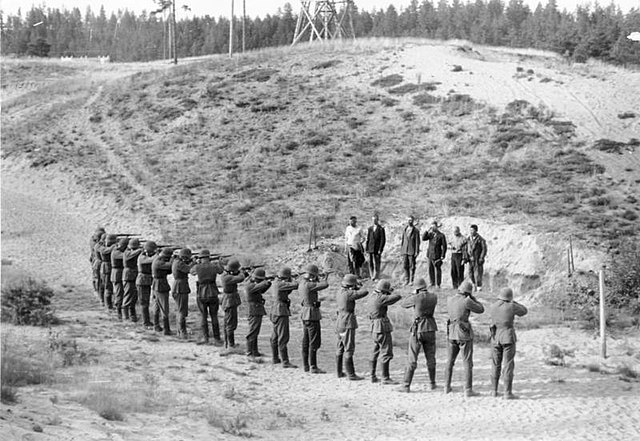In German military history, Bandenbekämpfung, also referred to as Nazi security warfare during World War II, refers to the concept and military doctrine of countering resistance or insurrection in the rear area during wartime with extreme brutality. The doctrine provided a rationale for disregarding the established laws of war and for targeting any number of groups, from armed guerrillas to civilians, as "bandits" or "members of gangs". As applied by the German Empire and later Nazi Germany, it became instrumental in the crimes against humanity committed by the two regimes, including the Herero and Nama genocide and the Holocaust.
Heinrich Himmler's report Number 51 from 1 October 1942 to 1 December 1942 detailing the murder of "bandits" and Jews in Southern Russia, Ukraine, and the Bialystok District
A depiction of the execution of Belgian civilians by German troops at Blegny in August 1914 during the Rape of Belgium
Execution of alleged partisans by German troops, September 1941
German soldiers relaxing after destroying a village in Epirus, Greece (1942 or 1943)
Counterinsurgency is "the totality of actions aimed at defeating irregular forces". The Oxford English Dictionary defines counterinsurgency as any "military or political action taken against the activities of guerrillas or revolutionaries" and can be considered war by a state against a non-state adversary. Insurgency and counterinsurgency campaigns have been waged since ancient history. However, modern thinking on counterinsurgency was developed during decolonization.
Police question a civilian during the Malayan Emergency. Counterinsurgency involves action from both military and police authorities.
U.S. Marines and ANA soldiers on patrol during counterinsurgency operations in Marjah, Afghanistan, February 2010
German soldiers relax after destroying a village in Epirus, Greece (1942 or 1943)
A strategic hamlet in South Vietnam c.1964







